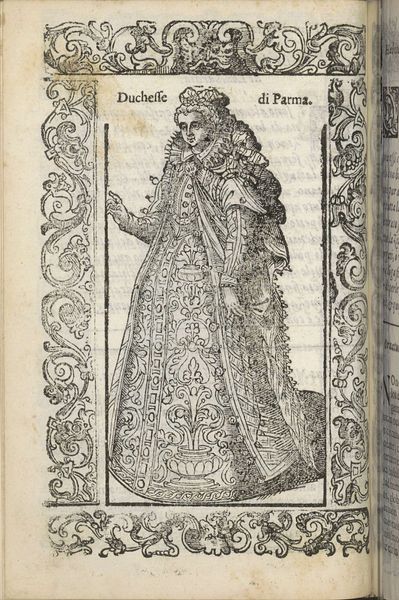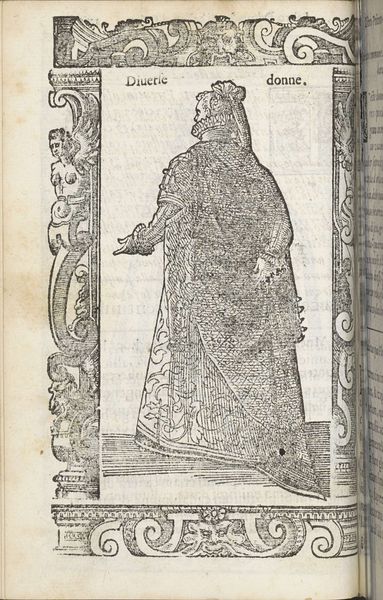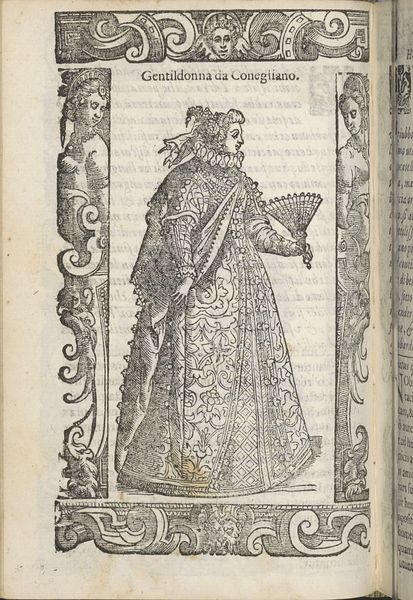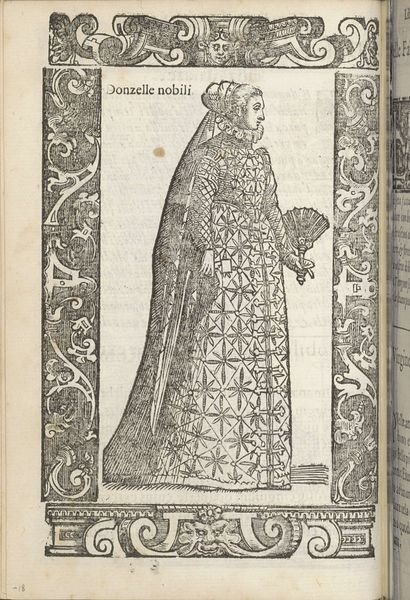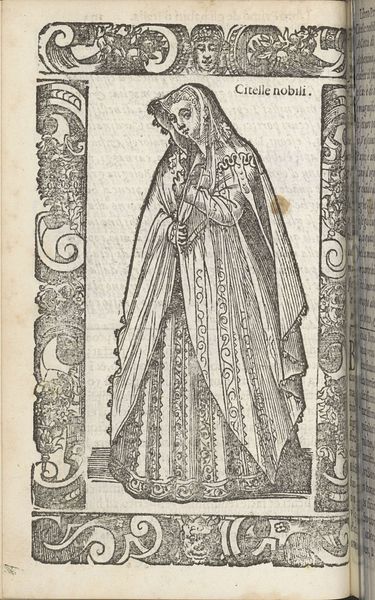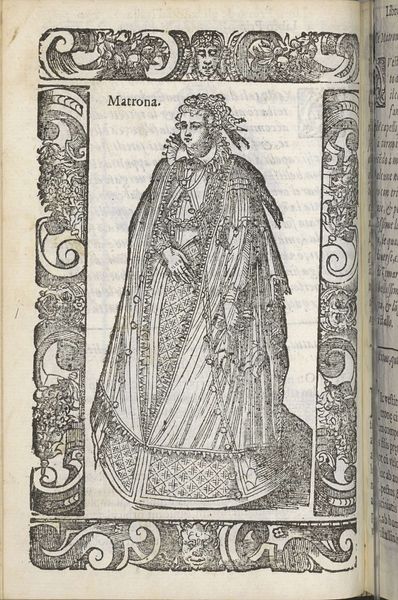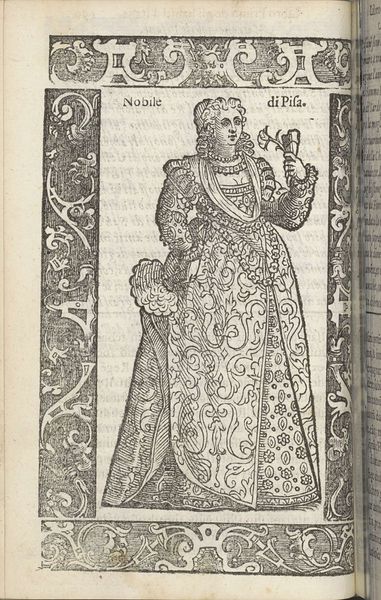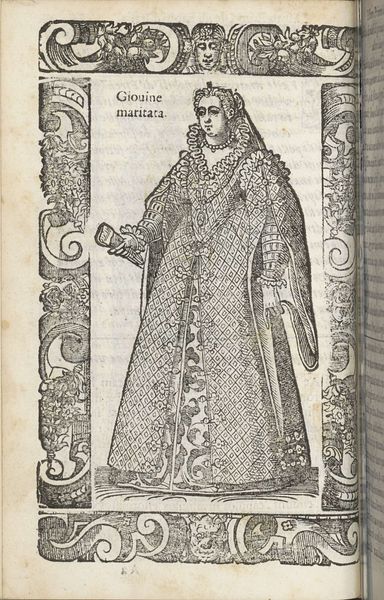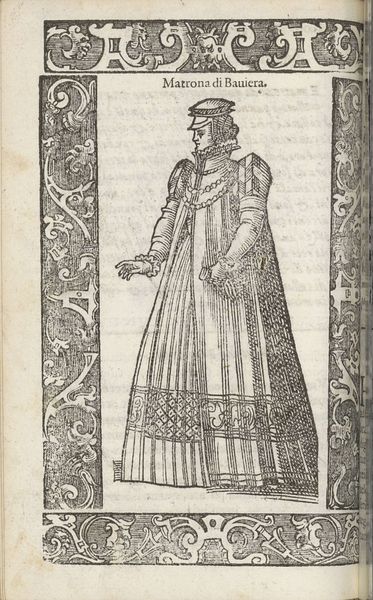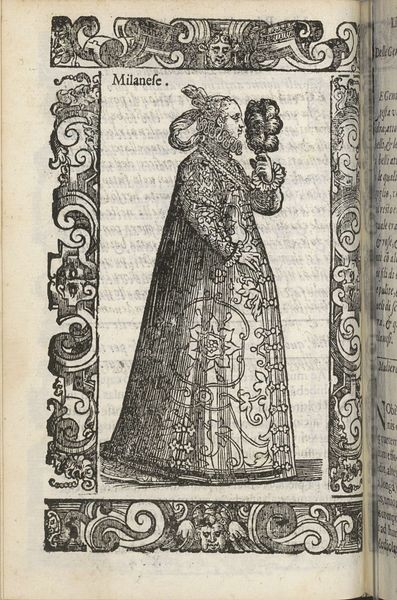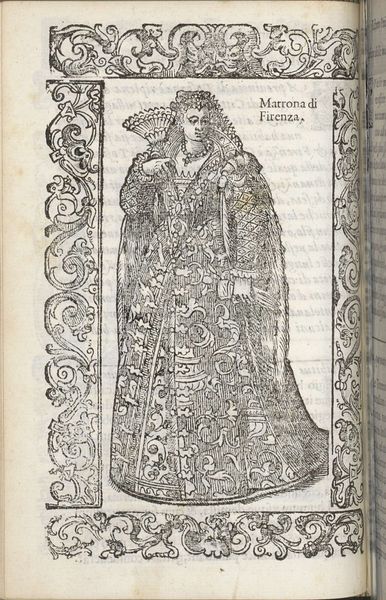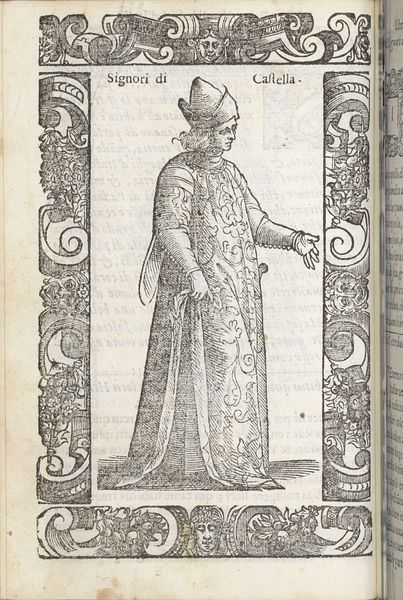
drawing, print, ink, engraving
#
portrait
#
drawing
# print
#
figuration
#
ink
#
history-painting
#
italian-renaissance
#
engraving
Dimensions: height 167 mm, width 125 mm
Copyright: Rijks Museum: Open Domain
Curator: Today we're looking at a print entitled "Donna di Romagna" by Christoph Krieger, dating back to 1598. It depicts a woman, presumably from the Romagna region, in elaborate dress. Editor: What strikes me immediately is the intense detail in the clothing, juxtaposed with the flatness of the figure. It's a dizzying display of pattern and texture created simply with lines etched in ink. How was such an effect achieved so uniformly across this textile representation? Curator: These kinds of prints, especially during the late Renaissance, served multiple purposes. Certainly, they were artistic products, but they also acted as documents of social status. Clothing denoted one’s place within the hierarchy. What’s truly telling is that dissemination was made easier, meaning the latest fashions and representations of power could be propagated further than ever before. Editor: It's all about the labour involved, isn't it? Consider the production of the actual fabric the woman might have worn. It most likely came from an Italian textile workshop, designed, woven, and embroidered by many artisans, then emulated here through a different mode of skilled reproduction, an engraver replicating a representation through this very print. And ink! Its trade, origins... such an unassuming substance but it's what allows this image to be made and re-made. Curator: Absolutely. And this print likely circulated among the elite, reinforcing the ideals and aspirations of the time. It visualises power. The attire broadcasts prestige, becoming a model, even a tool. The history of fashion in art always brings fascinating class-related context to the fore, especially when that fashion is shown to be the signifier of success itself. Editor: You're right. This wasn't just 'craft'; it played a vital socio-political role. Every line tells of skilled craftsmanship and artistic application but what of the materials, where do they come from, what do they become through production in the workshops of the late 16th Century, what traces do they leave? Curator: In that respect, looking beyond pure aesthetics, it tells us about so much beyond the woman it claims to represent. Editor: Yes, precisely, beyond face value: material considerations, material transformation and an expression of labour.
Comments
No comments
Be the first to comment and join the conversation on the ultimate creative platform.
